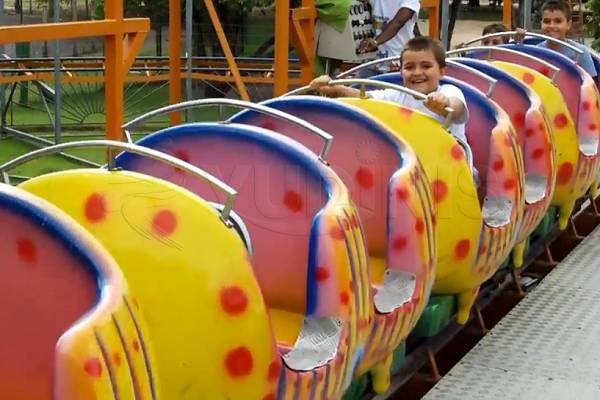At Dinis Amusement Equipment Manufacturer, we believe in bringing unparalleled excitement and joy to playgrounds around the world. One of the most thrilling additions you can make to any playground is a roller coaster designed specifically for children. In this blog, we’ll walk you through the essential steps to build a playground roller coaster, ensuring safety, durability, and maximum fun.

Step 1: Conceptualization and Design
The first step in building a playground roller coaster is to conceptualize the design. At Dinis, we prioritize creativity and safety. Start by sketching out the track layout, considering the available space and intended age group. The design should balance thrill with safety, incorporating gentle slopes, turns, and small drops that are appropriate for children.
Step 2: Selecting Materials
Choosing the right materials is crucial for the longevity and safety of the roller coaster. Dinis uses high-quality, durable materials such as galvanized steel for the tracks and weather-resistant, non-toxic fiberglass or metal for the cars. These materials are not only sturdy but also require minimal maintenance, ensuring the roller coaster remains safe and fun for years to come.

Step 3: Structural Engineering
Once the design and materials are finalized, it’s time to focus on the structural aspects. Engage professional engineers to ensure the roller coaster’s framework can withstand the loads and forces exerted during operation. At Dinis amusement factory, our engineering team meticulously calculates every aspect, from the foundational supports to the track joints, guaranteeing a stable and secure structure.
Step 4: Safety Features
Safety is paramount in any playground equipment, especially roller coasters. Incorporate essential safety features such as padded seats, secure harnesses, and anti-slip flooring in the cars. Additionally, install safety barriers along the track and use netting or fencing to create a secure perimeter around the roller coaster area. Regular inspections and maintenance are crucial to keep the ride safe over time.

Step 5: Installation
Professional installation is key to ensuring the roller coaster is set up correctly. At Dinis, we have a team of skilled technicians who specialize in assembling and installing playground equipment. The installation process involves securely anchoring the track supports, carefully aligning the track sections, and performing extensive safety checks.
Step 6: Testing and Certification
Before opening the amusement park coaster ride to the public, thorough testing is essential. Conduct multiple test runs to ensure the ride operates smoothly and safely. It’s also advisable to seek certification from relevant safety authorities to guarantee compliance with local regulations and safety standards. Dinis takes pride in its rigorous testing procedures, ensuring every ride meets the highest safety criteria.

Step 7: Grand Opening and Maintenance
With the roller coaster fully installed and tested, it’s time to unveil it to the public. Organize a grand opening event to attract attention and give children their first thrilling rides. Regular maintenance is vital to keep the roller coaster in peak condition. Create a maintenance schedule that includes regular inspections, cleaning, and servicing of mechanical components.
Conclusion
Building a playground roller coaster is a complex but incredibly rewarding project. With careful planning, high-quality materials, and a focus on safety, you can create a thrilling attraction that brings joy to children for years to come. At Dinis Amusement Equipment Factory, we’re dedicated to helping you achieve this vision, providing expert guidance and top-notch equipment every step of the way.
For more information on our playground roller coasters and other amusement equipment, feel free to contact us. Let’s create unforgettable memories together!
Leave a Reply